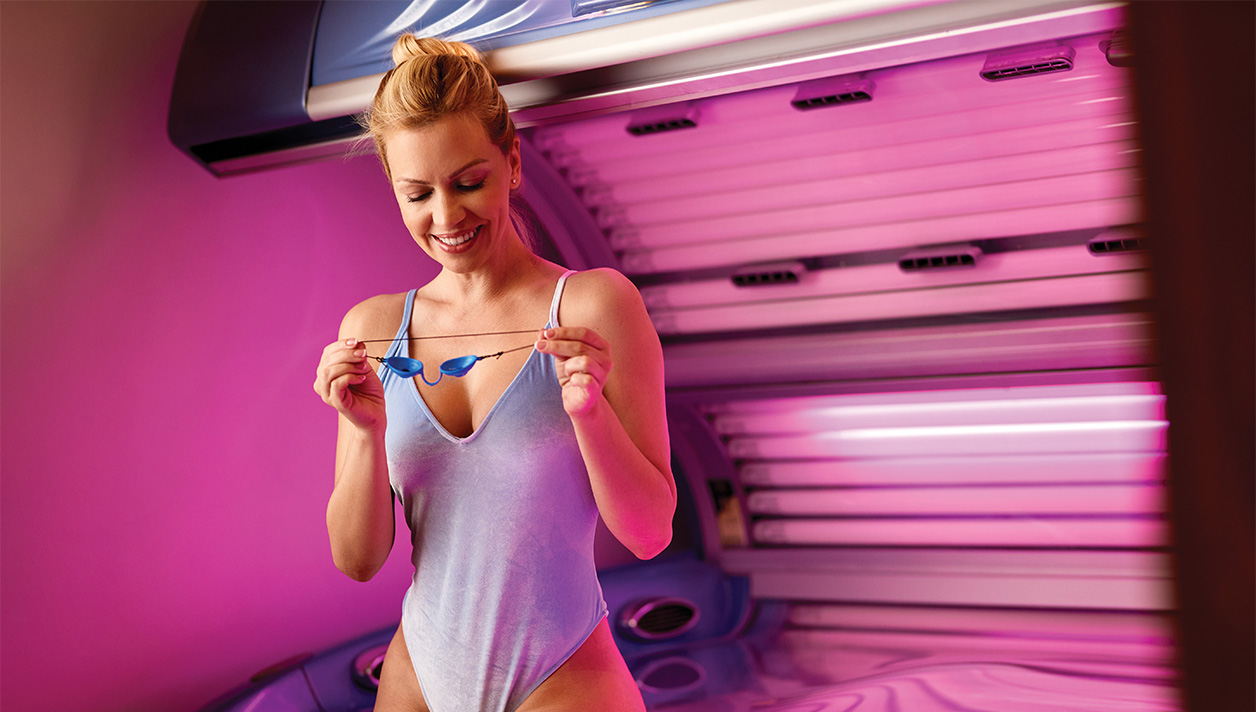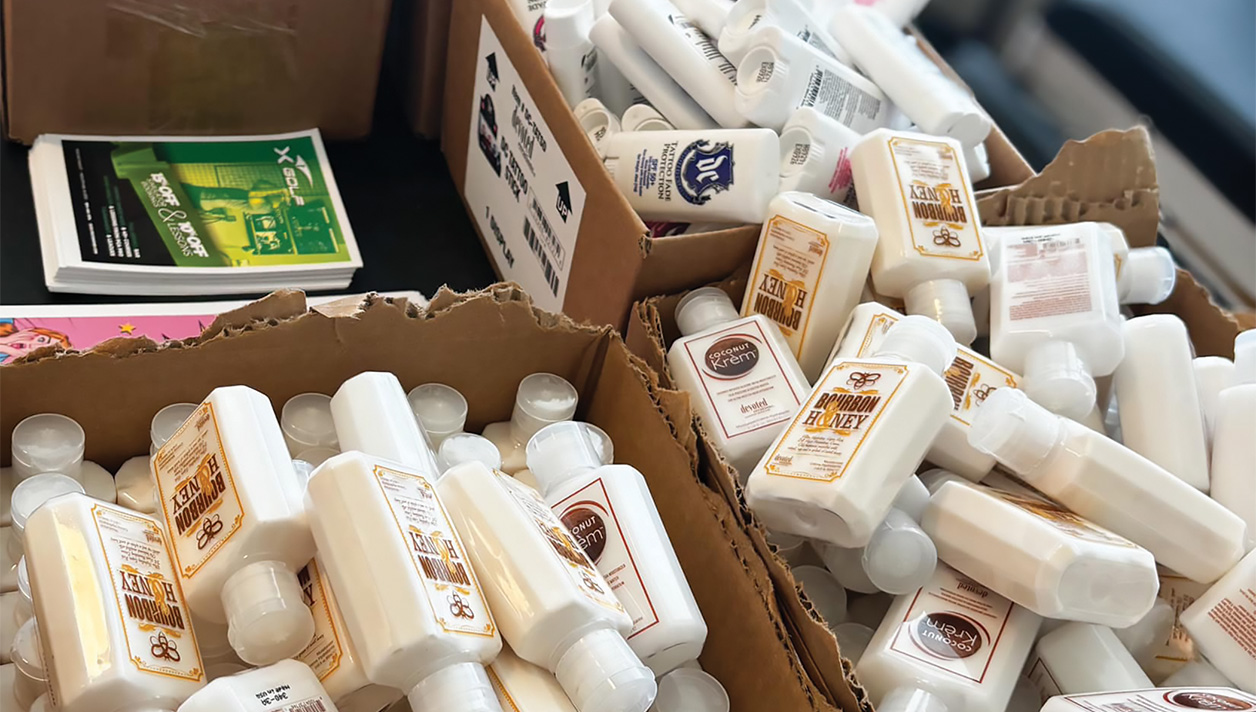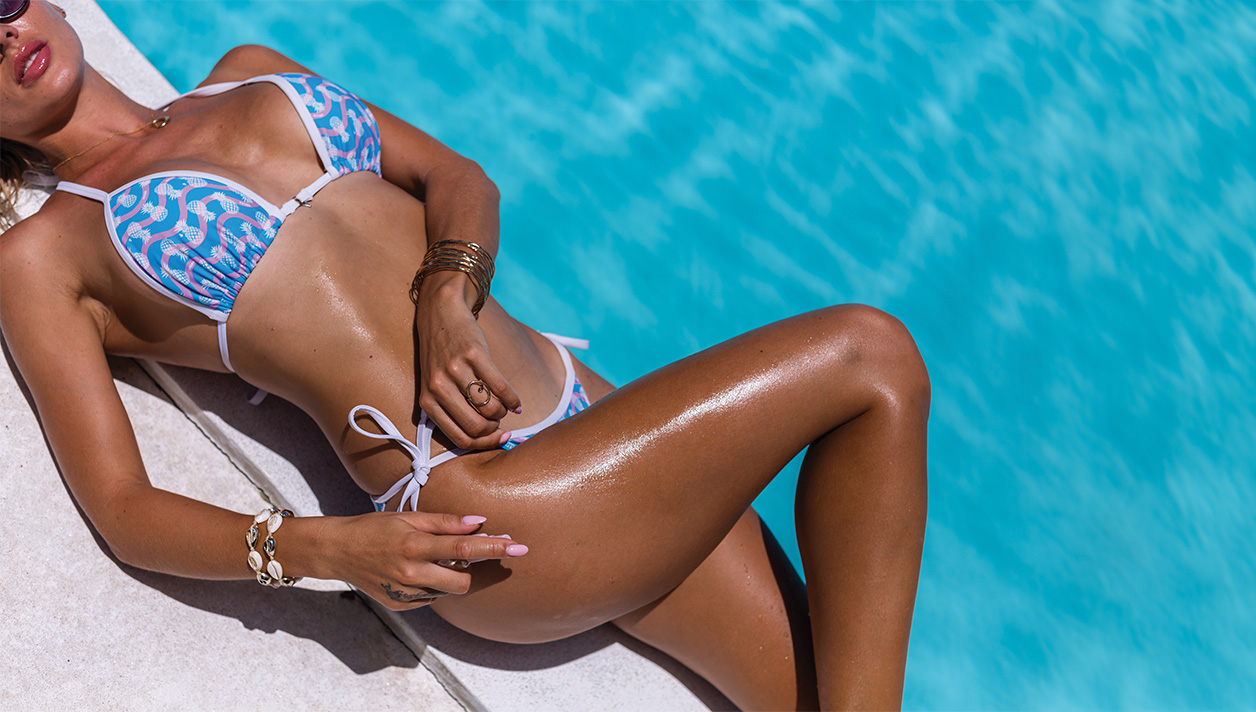[gap height=”15″]
This issue’s “Sunless Spotlight” features include great information on the sunless market sector, equipment and product providers, as well as tips from a salon operator having great success with spray-tanning. From the early days of sunless products that created varying tones of the color orange, to the first spray-booths that emitted a smell somewhat hard to describe (trust me, it was bad), to today’s modern lines of solution with exotic scents and skincare ingredients – things have certainly changed!
[gap height=”15″]
This issue’s “Sunless Spotlight” features include great information on the sunless market sector, equipment and product providers, as well as tips from a salon operator having great success with spray-tanning. From the early days of sunless products that created varying tones of the color orange, to the first spray-booths that emitted a smell somewhat hard to describe (trust me, it was bad), to today’s modern lines of solution with exotic scents and skincare ingredients – things have certainly changed!
[gap height=”15″]
I call recall being asked to serve as the moderator at a tanning expo in those early sunless days. I also happened to try my first spray session there, but didn’t quite grasp the importance of applying a barrier crème around my fingers and toes. Between the odor of the solution and the garish color of my face and hands, my experience was less than optimal. Thankfully, sunless solutions (and my ability to follow directions) have significantly improved.
[gap height=”15″]
This method of cosmetic tanning has offered a great opportunity for many who cannot and should not be exposed to UV, as well as many who desire immediate color to prepare for a special occasion. Prior to sunless, there was a risk for those who sought the “quick tan” and would have too many UV sessions in too short a time span, and maybe even use tanning systems with sunlamps too intense for their skin type.
[gap height=”15″]
In the course of my research and interviews with salon operators, some had questions about the long-term use of DHA in spray-tan solutions, as well as cautions, marketing disclaimers and State/Federal Regulations. The following information can be used as a guide.
[gap height=”15″][gap height=”15″]
How are sunless products regulated?
[gap height=”15″]
The regulation of the administering of sunless tanning products typically falls under the jurisdiction of state and local governments.
[gap height=”15″]
From the FDA online:
[gap height=”15″]
The Food Drug and Cosmetic Act does not authorize FDA to approve cosmetic products or ingredients, with the exception of color additives that are not coal-tar hair dyes. Firms and individuals who market cosmetics are responsible for assuring that their products are safe when used under labeled or customary conditions of use and properly labeled. FDA can take action against firms and individuals who violate the law. The practice of administering such products by professionals, such as in salons, is generally the responsibility of local and state health authorities. (goo.gl/R18sNW)
[gap height=”15″][gap height=”15″]
Do sunless tanners and bronzers provide protection from sunburn?
[gap height=”15″]
Remember that sunless sessions and products (unless otherwise stated) provide only a cosmetic tan, not photoprotection. Salon tanners using only the sunless method should always be advised to use and reapply the proper sun protection while in natural sunlight to minimize the risk of overexposure and sunburn.
[gap height=”15″]
The FDA states this clearly: Consumers are advised to read the labeling carefully to determine whether or not these products provide protection from the sun.
[gap height=”15″]
In fact, if tanning products do not contain any sunscreen ingredients, manufacturers are required to carry the following warning statement on the product label:
[gap height=”15″]
“Warning – This product does not contain a sunscreen and does not protect against sunburn. Repeated exposure of unprotected skin while tanning may increase the risk of skin aging, skin cancer, and other harmful effects to the skin even if you do not burn.” (21 CFR 740.19)
[gap height=”15″]
Are there any concerns about the inhalation of DHA in spray solution?
This question pertains to both the spray-tanner and the professional who administers the DHA tanning mist through hand-held spray (airbrush) devices. Salons can offer nose filters to protect against mist inhalation, as well as take measures to protect their eyes and mucous membranes and prevent inhalation of the DHA mist.
[gap height=”15″]
FDA suggests the following qualifying questions about DHA spray-booth or airbrush sessions:
[gap height=”15″]
- Are consumers protected from exposure in the entire eye area, in addition to the eyes themselves?
- Are consumers protected from exposure on the lips and all parts of the body covered by a mucous membrane?
- Are consumers protected from internal exposure caused by inhaling or ingesting the product?
[gap height=”15″]
In sum, sunless has been a great avenue for many who desire a tan. Sunless tanning has also provided salon operators with a fantastic service and ancillary product category to diversify their menus. As with any other service offered in a salon setting, operators must adhere to any appropriate regulations or guidelines.
For more on sunless and UV tanning, visit sunislife.com.
[gap height=”15″]
As with any other service offered in a salon setting, operators must adhere to any appropriate regulations or guidelines.
























